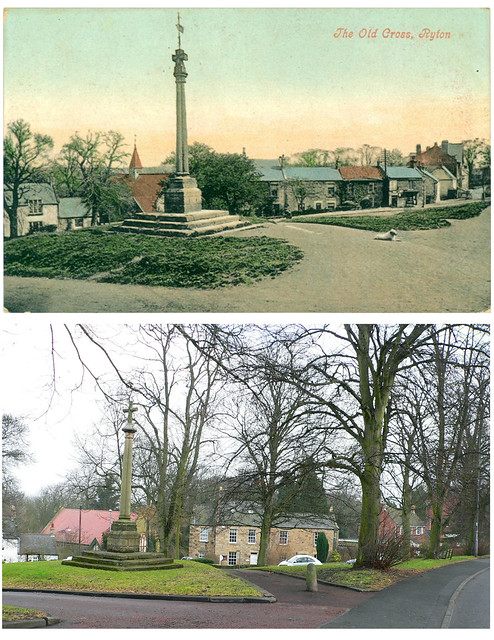then and now - holy cross

-
Description
Market Cross Market Cross The Market Cross stands on the village green, Thomas Chaucer erected the cross in 1795 a local Mason who designed and sculpted the cross. The cross stands 18ft and is located on the site of where John Wesley preached on the village green. The Cross is constructed in 4 shafts the original cross from the top of the monument currently stands in the grounds of Tynedale House, Ryton. Holy Cross Church The earliest record of a church in Ryton is 1112 in connection with the foundation of Kepier Hospital. In 1314 a composition was made between the master of Kepier Hospital and the rector of Ryton to the sum of two marks a year. The Holy Cross which is situated in the west of the village and is the oldest building in Ryton dates back to 1220. The Architecture of the Church is Gothic, and the spire towers 120ft, it was built in three stages, it is octagonal and made from oak and covered in lead. The stainglass windows are believed to date from 1450 The first rector Alexander de Nola was Italian and was appointed by Walter de Gray, Archbishop of Durham. There have been several distinguished rectors of Ryton, Thomas Secker (1727) who was to become the Archbishop of Canterbury. Charles Thorp (1807) Virtual Founder and first warden of Durham University. The Hon. Richard Byron (1769) brother of William fifth Lord Byron. The Village Fair The village fairs were first held in the churchyard on the anniversary of the founding of the church. The fairs involved jugglers and dancers and stalls selling local produce. The fairs became popular and had to be moved on to the village green, because of the number of people attending. The Village Green The Village green played an important social role within the community of Ryton, There were several events held here such as the Hirings, and each May Day the village green was where the may pole dancing took place. The green was also the place where John and Charles Wesley preached, Charles preached on more than one occasion on the village green. Hirings Annually there was the hirings which took place on the Friday before the 12th May and 22nd November. The village was cleaned up all the houses were whitewashed and painted. The purpose of the hirings was to bring the community together for a village fair, and for the villagers to hire servants. The servants for hire would stand around the market cross and wear a green sprig either in their hat if they were male, and the females would carry a sprig or would attach it to their clothing. The hirings would have also attracted jugglers and minstrels. There were stalls set up from the village green to the Jolly fellows where sweets and The hirings would attract people from surrounding villages, and would carry until dusk. The dancing would then carry on and move into rooms above the local pubs, it was tradition to give the fiddler and tin whistler a penny a tune. The hirings continued in Ryton until 1866. It is not sure when they started again but could have been around the early seventies late sixties, until the eighties. http://www.gateshead.gov.uk/ls/ryton.htm" >Ryton -
Owner
thekeithhall -
Source
Flickr (Flickr) -
License
What does this mean? Attribution License
-
Further information
Link: https://www.flickr.com/photos/15706617@N00/87395263/
Resource type: Image
Added by: Simon Cotterill
Last modified: 8 years, 1 month ago
Viewed: 855 times
Picture Taken: 2006-01-16T16:12:13 -
Co-Curate tags









